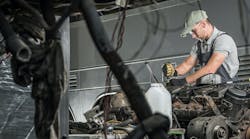Results from Transport Capital Partners’ (TCP) Third Quarter 2012 Business Expectations found that almost 50% of carriers expect that they will need to raise driver pay 2%-5% this year. One-fourth of carriers plan to raise pay, but by less than 2%. A total of 77% of carriers expect to raise driver pay this year.
“The pressure on driver wages is evident in the survey and our visits with carriers,” says Richard Mikes, TCP partner and survey leader. “The ATA (American Trucking Associations) turnover statistics have risen over the past year as driver wages lag behind other career paths,”
One reason carriers may be expecting to raise driver pay is the reported number of unseated trucks. While this varies by carrier size, overall 75% of carriers report unseated trucks. Due to the high number of unseated trucks, drivers are a controlling input in equipment plans. “Without better pay and affordable health care for drivers, carriers will not be able to increase capacity for shippers,” says Steven Dutro, TCP partner.
The health care debate is affecting carriers' plans for the future, but not as significantly as reported in November of 2011. Last year, 50% of surveyed carriers reported that recent changes in health care adversely impacted their company compared to only one-third of carriers this quarter. Larger carriers (over $25 million in revenue) plan to have employees contribute more, while smaller carriers plan to reduce overall coverage. Other popular strategies include having employees pay for family coverage and implementing wellness programs.
“Many carriers are waiting on results of the Presidential election before considering health plan options and costs going forward,” says Mikes. “Like decisions related to income and estate tax planning the pause button has been hit, given the two different potential pathways ahead.”








